Tibet Agriculture and Animal Husbandry College is one of the starting points of modern higher education in new socialist Tibet. It can be traced back to the Tibet Public School founded in Xianyang, Shaanxi Province in 1958. In 1965, Tibet Public School was renamed Tibet College for Nationalities. In 1971, a preparatory office for the relocation of the school was established in Linzhi. , planned to move the entire school back to Tibet. In 1974, it was changed to Linzhi Branch of Tibet Nationalities College according to the decision of the Party Committee of the Autonomous Region. In 1978, it was named Tibet Agriculture and Animal Husbandry College with the approval of the State Council. It was among the first units in the country with the right to award bachelor's degrees. In 2001, it merged with Tibet University A new Tibet University was established, and in 2016, the Tibet Agriculture and Animal Husbandry College was restored with approval from the Ministry of Education. The school is located in Linzhi City, Tibet, known as "Tibet Jiangnan". The campus covers an area of 1,292 acres, with a total construction area of 290,300 square meters and fixed assets of 611 million yuan, of which the total value of teaching and scientific research instruments and equipment is 270 million yuan. The library has a collection of 662,000 paper books, a complete electronic book system and computer network service system, and 1.45 million kinds of electronic books. It has 22 division-level units, including 9 teaching and research units: School of Plant Science, School of Animal Science, School of Food Science, School of Resources and Environment, School of Water Conservancy and Civil Engineering, School of Electrical Engineering, Department of Public Teaching, and Adult Education Department. Tibetan Plateau Ecological Research Institute. The school currently has 7,315 full-time undergraduate college students, 710 graduate students, and 1,128 adult education students. There are currently 568 faculty members (including 9 cadres who aid Tibet and 2 members of the doctoral service team) and 457 full-time teachers. Among the full-time teachers, 185 are associate senior or above, accounting for 40.48%; 313 have master's degrees or above, accounting for 68.49%, including 61 with doctorate degrees, accounting for 13.35%. There are 3 national outstanding teachers, 6 experts with special government allowances from the State Council, 3 national candidates for the New Century Talents Project, 1 innovative leading talent of the National Ten Thousand Talents Program, and 1 candidate for the Ministry of Education’s New Century Excellent Talents Support Program. There are 6 members of the Higher Education Steering Committee of the Ministry of Education, 1 scientist working in the yak system of the Ministry of Agriculture, 3 experts subsidized by the autonomous region government, 6 famous teaching teachers in the autonomous region, and 2 advanced individuals in poverty alleviation in the region. The school has 1 national key (cultivation) discipline and 10 autonomous region key disciplines. There are currently 8 first-level master's degree programs in Crop Science, Forestry, Veterinary Science, Water Conservancy Engineering, Food Science and Engineering, Plant Protection, Agricultural and Forestry Economic Management, and Herbology, and 5 in Agriculture, Veterinary Medicine, Landscape Architecture, Energy and Power, and Civil Engineering and Water Conservancy. A professional master's degree authorization point. There are 36 undergraduate majors and 21 junior college majors, which widely involve agriculture, animal husbandry, forestry, water, electricity, ecology, environment, food, engineering and other fields, and are closely related to the economic construction of the region. There are 3 national first-class undergraduate major construction sites in agriculture, forestry, electrical engineering and automation, and 12 autonomous region first-class undergraduate major construction sites. There are 7 “new engineering” construction projects, 5 “new agricultural science” construction projects, and 2 “new liberal arts” construction projects. There is one national-level ideological and political model course ("Plant Physiology"). There are 12 key laboratories and platforms at or above the provincial and ministerial levels, including 1 national field observation station, 1 key laboratory of the Ministry of Education, 1 collaborative innovation center jointly established by the Ministry of Education and the Ministry of Education, and 2 observation stations of the National Forestry and Grassland Administration. , 1 key laboratory of the Ministry of Agriculture and Rural Affairs, and 6 autonomous region-level scientific research platforms. There are 55 internship and training bases inside and outside the school, and 65 teaching laboratories. It has established a national key R&D plan project demonstration base, a Ministry of Agriculture and Rural Affairs agricultural and rural informatization demonstration base, the first batch of national new professional farmer cultivation demonstration bases, an autonomous region major science and technology special project demonstration base, an autonomous region-level Linzhi Tibetan Pig Agricultural Science and Technology Park, and an autonomous region’s modern agriculture. There are many bases and parks including technical training base, the autonomous region’s key vocational teacher training base, and the autonomous region’s college student entrepreneurship incubation base. Since the "14th Five-Year Plan", 303 projects have been funded at the national, provincial and ministerial levels, with more than 138.99 million yuan in funding, all of which are oriented to Tibet's economic and social development and plateau ecological fields, with obvious characteristics of "characteristic agriculture" and "integration of industry, academia and research". Successfully applied for 1 national key R&D plan project with a funding of 27.45 million yuan, 1 National Natural Science Foundation of China Regional Joint Fund key project with a funding of 2.6 million yuan; 14 National Natural Science Foundation of China regional science fund projects with a total funding of 4.74 million yuan; National Natural Science Foundation of China There are 10 sub-topics of key regional joint fund projects with a total funding of 657.910,000 yuan; 2 projects to recruit personnel for the construction of the modern agricultural industry technology system of the Ministry of Agriculture, with a total funding of 5.6 million yuan; 1 major science and technology project in the autonomous region, with a funding of 19.5 million yuan. He has won 4 scientific research achievement awards at the provincial and ministerial level or above, including 2 first prizes of the Tibet Autonomous Region Science and Technology Award. The school gives full play to the supporting role of science and technology, actively integrates into the main battlefield of rural revitalization and industrial development, and realizes the diversified transformation of scientific and technological achievements. Actively undertake "Research and Integrated Demonstration of Tibetan Pig Ecological Breeding Model at Goukou in Linzhi Mountains", "Research and Demonstration of Key Technologies for Improving Quality and Efficiency of Longzi Black Highland Barley", "Research on Key Technologies for Comprehensive Development of Animal Husbandry in Bangor County", "Investigation of Walnut Genetic Resources in Tibet Autonomous Region" Cataloging" and "Census of Chinese (Tibetan) Medicine Resources in the Tibet Autonomous Region" and other projects. Deeply involved in increasing highland barley production, yak fattening, Tibetan pig industry development, domestication and breeding of Tibetan medicinal materials, quinoa promotion, tea planting, comprehensive scientific investigation of the Qinghai-Tibet Plateau, Nagqu tree planting, giant cypress transplantation, traditional Chinese medicine cultivation, and comprehensive prevention and control of common yak infectious diseases technology, research on key technologies for ecological prevention and control of highland barley diseases and insect pests in Tibet, prevention and control of livestock and poultry diseases, utilization of characteristic forest and fruit resources, investigation of ancient and famous trees, restoration of alpine grasslands and other key projects. Provided long-term technical support to more than 20 companies, and signed patent transfer, technology transfer, formula and processing technology licensing contracts with 3 companies. Experts from the school drafted the "Opinions of the General Office of the People's Government of the Tibet Autonomous Region on Further Strengthening the Protection and Utilization of Tibetan Medicinal Material Resources", the "Development Plan for the Tibetan Medicine Industry in Nyingchi Region (2014-2030)" and the "Development Plan for the Tibetan Pig Industry in the Tibet Autonomous Region". Establish more than 10 science and technology demonstration bases in various cities. Since the "14th Five-Year Plan", it has undertaken 47 shifts of various types of training, including special training for scientific and technological personnel in the "Three Regions" talent support plan, and 10,000 experts serving grassroots level, training 2,260 professional and technical personnel and 2,369 farmers and herdsmen. The school attaches great importance to the cultivation of students' innovative and practical abilities. In the past five years, it has won more than 190 awards in national competitions and subject competitions, especially the special prize in the 17th National College Student "Challenge Cup" Extracurricular Academic Science and Technology Works Competition, realizing the goal of Tibetan universities A breakthrough in achieving zero special prizes in this event; won the special prize in the first national Huawei Cup College Student Agricultural Water Conservancy Engineering and Related Majors Innovation Design Competition, and the first prize in the National Seventh National College Students Agricultural Construction Environment and Energy Engineering Related Majors Innovation and Entrepreneurship Competition 1 and 2 second prizes, 1 first prize and 2 second prizes in the 6th National College Students Water Conservancy Innovation Design Competition, 1 silver medal and 1 bronze medal each in the 5th "Internet+" College Students Innovation and Entrepreneurship Competition, One second prize each in the 3rd National College Student Animal Science Professional Skills Competition and the 3rd National College Student Life Science Competition. The school carries out extensive foreign exchanges and cooperation, pays close attention to the development trends of higher education at home and abroad, and implements open education. The Organization Department of the Central Committee of the Communist Party of China, the Ministry of Education, the Youth League Central Committee and other units, as well as China Agricultural University, Beijing Forestry University, Beijing Foreign Studies University, Northeast Forestry University, Zhejiang University, Hohai University, Nanjing Agricultural University, Northwest Agriculture and Forestry University, Wuhan University, Huazhong University of Science and Technology A large number of cadres from universities such as Huazhong Agricultural University, Shanghai Jiao Tong University, Tongji University, and Chongqing University came to the school to carry out education and aid work in Tibet, and jointly trained undergraduates with many mainland universities such as China Agricultural University, Hohai University, and Northeast Forestry University. Graduate students, and has hosted many national and regional large-scale academic conferences, which has effectively promoted the development of the school. The school adheres to the school motto of "Education serves agriculture and fine industry promotes Tibet" and the school spirit of "patriotism, unity, diligence, pragmatism and innovation", vigorously promotes the "old Tibetan spirit" and the school's "preparatory spirit", and adheres to the principle of "based on the plateau and facing Tibet". "Serving the 'three farmers'" school orientation and the three main lines of "plateau agriculture, plateau ecology, and plateau hydropower" highlight the political standards of loving the party, patriotism, socialism, safeguarding the unity of the motherland and national unity. We should adhere to the talent training standards of "foundation, emphasizing practice and seeking innovation", and strive to cultivate qualified socialist builders and reliable successors who are "reliable, capable, useful and good at work". Since its relocation and preparation, it has trained and transported more than 30,000 full-time professional and technical talents to Tibet, becoming the cradle of leadership, scientific research, and management at all levels in Tibet, and a number of outstanding alumni representatives have emerged. The school will insist on being based on the plateau, facing Tibet, and serving "agriculture, rural areas and farmers", and in accordance with the principle of "centering on one center (taking quality improvement as the center and continuously improving the school's educational strength and comparative advantages)" and highlighting two major priorities (strengthening discipline construction and talent team building). ), achieve three major improvements (improving the quality of talent training, improving the level of scientific research, and improving the ability to serve society), and deepening four reforms (internal management reform centered on improving the modern university governance system, education and teaching reform centered on teaching quality) , personnel allocation reform with job appointment and performance appraisal as the core, security system reform with 'harmonious, green, efficient, people-oriented' as the core), promoting five transformations (from scale expansion to quality improvement; from factor-driven to "Innovation-driven transformation; transformation from limited collaboration to open collaboration; transformation from traditional management to modern governance; transformation from balanced development to supporting the best and supporting the strong)" development ideas, strive to improve the level of school running, and significantly enhance the school's core competitiveness; adhere to the Oriented by social needs, taking discipline construction as the leader, we will actively expand urgently needed disciplines and majors for Tibet's economic and social development, steadily develop characteristic disciplines and majors based on the plateau's location advantages, achieve coordinated development of agriculture, engineering, science, and management, and strive to build a university with outstanding plateau characteristics. , a well-known high-level applied research agricultural and animal husbandry university in China.
-

Tsinghua University
-

Peking University
-

Fudan University
-

Wuhan University
-

Zhejiang University
-

Nanjing University
-

Sun Yat-sen University
-

Tongji University
-

Renmin University of China
-

Jahrom University of Medical Sciences
-

Mesoamerican University
-

Istmo University
-
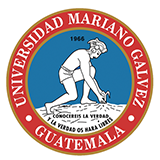
Mariano Galvez University of Guatemala
-
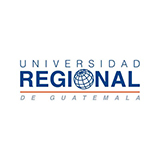
Regional University of Guatemala
-
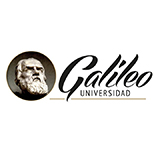
Galileo University
-

Francisco Marroquín University
-

Rafael Landívar University
-
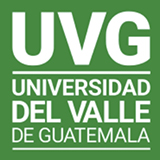
University of the Valley of Guatemala
-
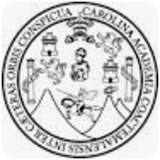
University of San Carlos of Guatemala
-

Technological Institute of Tlaxcala Plateau
-

Golfo University
-
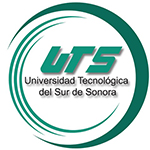
Technological University of South Sonora
-
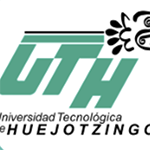
Technological University of Huejotzingo
-
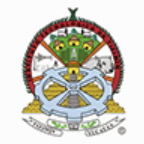
Tizimín Institute of Technology
-

Chilpancingo Institute of Technology

